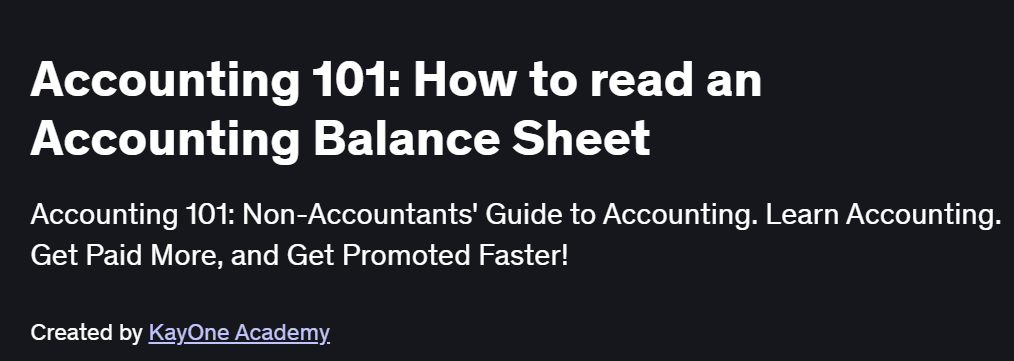What will you in Accounting 101: How to read an Accounting Balance Sheet Course
- Understand the basic structure of financial statements and their components.
- Learn how to read and interpret a balance sheet.
- Gain insights into assets, liabilities, and equity on a balance sheet.
- Understand how balance sheets reflect a company’s financial health.
- Build confidence in evaluating companies’ financial positions using balance sheets.
Program Overview
Module 1: Introduction to Financial Statements
⏳ 20 minutes
Overview of financial statements and their role in business.
Introduction to the three main financial statements: balance sheet, income statement, and cash flow statement.
Understanding the key terminology used in financial reports.
Module 2: Understanding the Balance Sheet
⏳ 30 minutes
Structure of the balance sheet: assets, liabilities, and equity.
How the balance sheet reflects a company’s financial health.
How to analyze the balance sheet for key insights.
Module 3: Assets and Liabilities
⏳ 40 minutes
The difference between current and non-current assets.
Types of liabilities: short-term and long-term.
Analyzing the company’s debt and asset management.
Module 4: Equity and Financial Ratios
⏳ 40 minutes
What equity represents in a company.
How to calculate and interpret common financial ratios: debt-to-equity, current ratio, etc.
Using equity information for evaluating investment potential.
Module 5: Real-World Case Studies
⏳ 40 minutes
Analyzing real balance sheets from publicly traded companies.
Practical exercises to apply learning and gain deeper insights into balance sheets.
How to assess a company’s financial stability through its balance sheet.
Get certificate
Job Outlook
Financial analysts and accountants are in high demand in multiple sectors, including corporate finance, investment banking, and accounting firms.
The ability to read and interpret financial statements is crucial for roles such as financial analyst, business consultant, and auditor.
Financial analysts can earn between $60K and $90K annually, with opportunities for career progression.
Specification: Accounting 101: How to read an Accounting Balance Sheet
|





